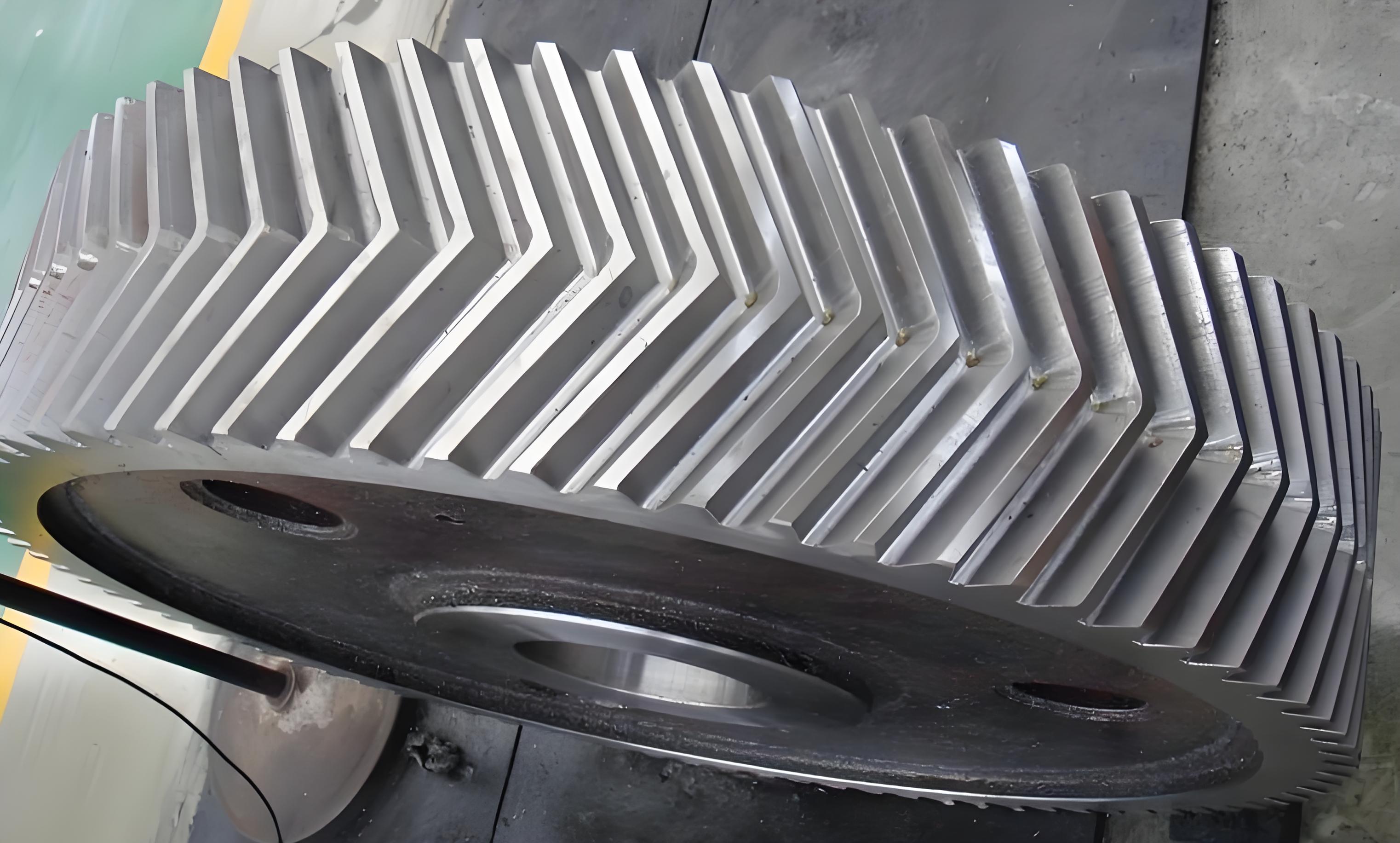Abstract
Power shunt transmission systems have been widely used in high-power transmission due to their advantages of strong bearing capacity, large transmission ratio, and compact structure. In this paper, based on the coaxial transmission configuration design of a six-branch power transmission, a judgment condition that is easier to determine whether four gears mesh interference is proposed, combined with modified gears, a gear matching method for six-branch herringbone gears is established. This method can quickly calculate the modification coefficients that prevent gear meshing interference and obtain multiple sets of schemes that meet the transmission ratio requirements and interference error.

1. Introduction
In ship power systems, high-power herringbone gear transmission devices are widely used. Many scholars at home and abroad have conducted extensive research on branched gear transmissions, elaborating on their structure, theory, and dynamics. The specific configuration of the power six-branch herringbone gear transmission system is shown in Figure 1.
<img src=”https://example.com/image.png” />
Figure 1. Six-branch herringbone gear transmission system
Table 1. Key Components of the Six-Branch Herringbone Gear Transmission System
| Component | Description |
|---|---|
| Z1 | Input pinion gear |
| Z21, Z22, Z23 | Idler gears |
| Z31, Z32, Z33 | Intermediate gears |
| Z4 | Double gears connected to Z3 |
2. Literature Review
Previous studies have focused on various aspects of branched gear transmissions, including structural design, theoretical analysis, and dynamic performance. Some key references are summarized in Table 2.
Table 2. Summary of Key References on Branched Gear Transmissions
| Author(s) | Main Contributions |
|---|---|
| [5] | Proposed a mathematical method to calculate possible solutions for four gears meshing simultaneously |
| Segade Robleda et al. | Studied the research status and gear matching conditions of branched gearboxes, introduced methods for load sharing in multi-branch systems |
| Li Zhibin et al. | Developed a gear matching scheme for six-branch herringbone gear systems |
| Krizan | Reviewed the modification coefficient and distribution method for involute external spur gears |
3. Gear Matching Method
3.1 Expanded Four-Gear Meshing Condition
Based on Vilán’s four-gear simultaneous meshing condition, this paper expands it to make it easier to obtain solution results.
3.2 Influence of Modification Coefficient on Interference
The modification coefficient of the modified gear in the four-gear meshing system is further studied. By adjusting the modification coefficient, the interference is reduced to close to zero.
Table 3. Key Parameters of the Modified Gear
| Parameter | Description |
|---|---|
| Modification coefficient | Adjusts to minimize gear interference |
| Transmission ratio | Maintained according to system requirements |
4. Verification and Results
The theoretical correctness of the proposed method is verified through software modeling. The obtained gear parameters meet all requirements, providing a practical method and theoretical basis for the design of six-branch herringbone gear transmission systems in ship power systems.
5. Conclusion
Proposes a gear matching method for power six-branch herringbone gear transmission systems, which considers adjacency conditions, transmission ratio conditions, and interference avoidance. The method not only quickly calculates the modification coefficients to prevent gear meshing interference but also provides multiple sets of schemes that meet transmission ratio requirements and interference errors. The results obtained through this method satisfy various requirements, offering a practical approach and theoretical support for the design of such transmission systems in ship power systems.
